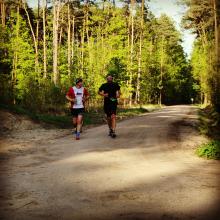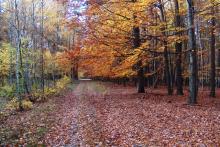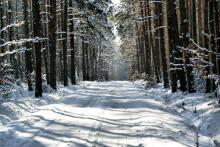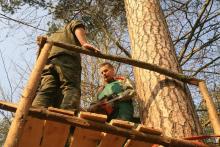 Asset Publisher
Asset Publisher
Sale conditions
Sale conditions of wood are specified by the regulation of Director – General of the Sate Forests.
Within the framework of the individual sale , the foresters try to meet the fast growing demand, because more and more people use wood in order to heat their houses. Contrary to general opinion, these are not only village people, even though they prevail among recipients. The growth of firewood demand is the result of occurrence of new housing estates built in the suburbs of large agglomerations, where houses are usually equipped in fireplace heating installations.
Firewood is not only the most ecological heat source, but also is much more attractive in respect of relation of price and electric efficiency, rather than cola, oil, gas or electric power.
In recent years, the Sate Forests increased the sale of firewood of one third – up to over 4 million cubic meters annually. Firewood is not only the most ecological heat source, but also is much more attractive in respect of relation of price and electric efficiency, rather than cola, oil, gas or electric power. Some of customers choose already prepared and cut into pieces wood, the others very willingly obtain it by themselves after arranging all details and fulfilling particular safety conditions, and after paying the fee; that concerns mainly so called "thinnings". Such a raw material is very cheap, that is why many people from village areas profit from such possibility.
 Asset Publisher
Asset Publisher
Informacja o pryszczycy
Informacja o pryszczycy
Informacja głównego lekarza weterynarii dla posiadaczy bydła, owiec, kóz oraz innych zwierząt parzystokopytnych na temat PRYSZCZYCY.
Pryszczyca (Foot and mouth disese – FMD) jest wirusową, bardzo zakaźną chorobą zwierząt parzystokopytnych, w tym bydła, świń, owiec i kóz. Wirus pryszczycy przenosi się przez kontakt bezpośredni pomiędzy zwierzętami, za pośrednictwem mięsa i produktów mięsnych, mleka i jego przetworów, nasienia, skór, wełny, paszy dla zwierząt, itp.
Wirus może być przenoszony także przez człowieka, sprzęt gospodarski, ptaki, owady, gryzonie, środki transportu czy odzież.
Objawy chorobowe:
- gorączka, apatia, utrata apetytu, brak przeżuwania, gwałtowny spadek mleczności;
- zwiększone pragnienie i obfite ślinienie;
- pęcherze na języku, wargach i dziąsłach, śluzawicy u bydła/tarczy ryjowej u świń, na skórze szpary międzyracicowej, a także na wymieniu i strzykach;
- po pęknięciu pęcherzy - bolesne rany, owrzodzenia;
- cielęta i prosięta, karmione mlekiem zwierząt chorych na pryszczycę często padają z objawami biegunki i ogólnego wycieńczenia;
- równie często dochodzi do padnięć zwierząt dorosłych.
Więcej szczegółów znajduje się w ulotkach możliwych do pobrania poniżej.









